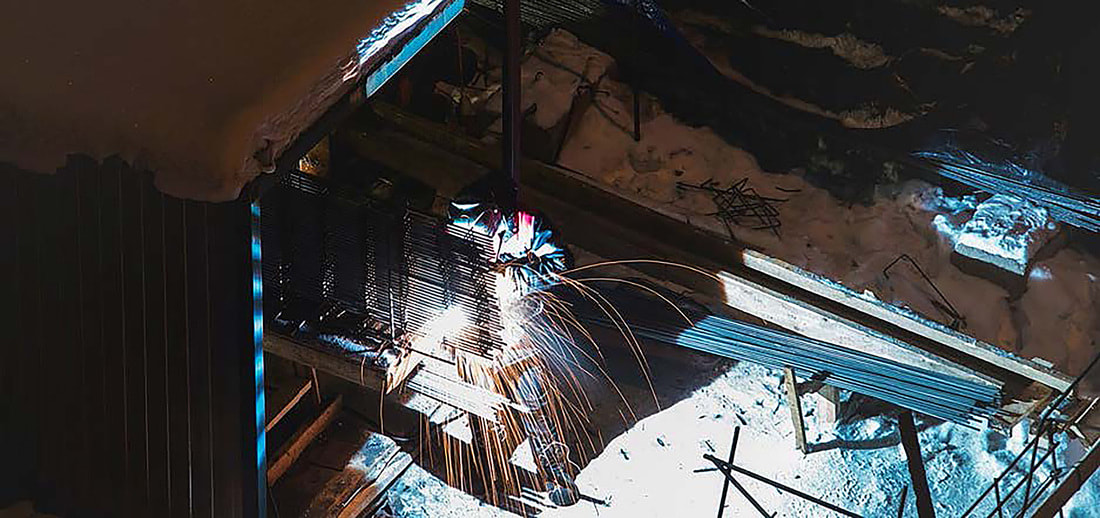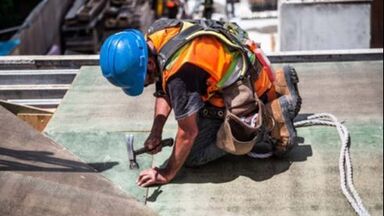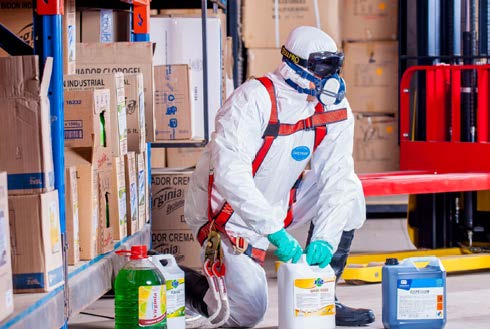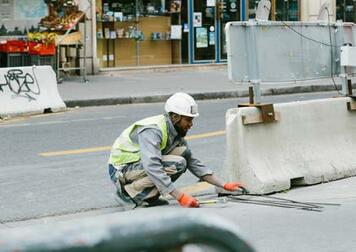Work locations and vocations that require hydration year-round
October 9, 2023
By Kent Precision Foods Group for the Blue Print
By Kent Precision Foods Group for the Blue Print
|
No matter what line of work you’re in or where your job takes place, hydration is important.
In most cases, it’s a simple matter of making sure you have water or an electrolyte beverage on hand and take frequent sips throughout the day. In some roles and settings, however, hydration poses a significant challenge as well as a safety concern, and not just in the summer. Dry climatesThis one is probably the most obvious. When the temperature gets high and the air is dry, the environment is working against you and trying to claim your body’s moisture. Your sweat evaporates more quickly and some moisture is lost through respiration as you work.
The higher the heat, the faster the water loss. The effect is even more pronounced when you’re working hard. If it’s hot and dry, you need to have a good source of (preferably) cool water available. It’s not just hot weather, either. Even in colder months, parched air will dehydrate workers simply because of moisture diffusion across a gradient – dry air wants to suck up all the water it can from any source, including you. So, even if the weather is cool, you need to make an extra effort to stay hydrated when the air is dry. Hot and humid climatesHydration is challenging when there’s too much moisture in the air, too. You might overheat in hot, muggy weather, but its for a slightly different reason.
Your body uses sweat to reduce body heat. When the sweat evaporates from your body, it cools your skin. When the air is very humid, though, your sweat won’t evaporate as much. At 100% humidity, in fact, water won’t evaporate at all. Essentially, the air is holding all the water it can and it doesn’t have the capacity to take on more, so your sweat can’t perform its cooling function. In very humid weather, you might continue to sweat, but it won’t cool you down. It will just progressively dehydrate you. Oil, gas, or chemical plantsYou won’t step foot on an oil rig or a gas plant without first donning the layers of protective equipment standard for field workers. In some applications, there is an increased risk for flammable atmospheres that make fire-resistant coveralls necessary, as well as gloves, boots, hardhats, glasses, and other gear.
All these layers make for a very warm ensemble. On a hot day, it doesn’t take much to overheat wearing all this stuff. Add to the fact that a lot of tasks on rigs and plants involve a lot of stairs, hot piping and vessels, and physically demanding work. All of this is a recipe for dehydration. RoofingThere are two factors that make hydration challenging for roofers: there’s typically no shade in their working areas and the materials they use emit radiant heat.
Roofers toil away directly under the sun and usually on dark-colored surfaces. Those surfaces absorb short-wave solar radiation (visible light) and re-radiate it as longer wave infrared radiation (heat). For this reason, roofs can become a great deal hotter than the ambient air temperature and create a layer of extra hot air. It’s even worse when roofers are working with roofing tar, which usually has to be warmed before applying. Roofers are often really mindful of the cargo they carry up. They try to minimize the amount of stuff they have to carry up and down the ladder throughout the work day. Not only so they can have a lighter load and make fewer trips, but also to eliminate as many tripping hazards and as much clutter as they can. Unfortunately, water bottles and electrolyte drinks often don’t make the cut. They’re sometimes left in the truck instead of being close at hand. Road workIn some colder regions, road work tapers off to nearly zero in the winter months, but in warmer places it can go on throughout the year. Staying hydrated while doing this kind of work can be a challenge because of all the heat involved in the work processes.
Asphalt pavers work with material that is spread at a high temperature (above 550°F or 300ºC). Heat rising off the spread mixture creates a warm microclimate around the machinery where workers have to perform their tasks. Combine that with the high-visibility safety apparel that is standard for the job and you can have some sweltering conditions. FoundriesA 2016 study analyzing heat stress in some extreme work environments found that the sampled iron foundries had a mean ambient temperature of 43.4ºC (110ºF). That’s an excessively hot environment on its own, not even accounting the hours of hard work employees have to put in.
Heat hazards around furnaces and molds require substantial PPE to be donned at all times. Taken with the high ambient temperature, it gives us a high potential for dehydration and heat stress. WeldingIn terms of the heat factors, welding ticks all the boxes: heavy PPE, multiple heat sources, confined spaces, and environmental heat.
Welders have to work under some of the most extreme conditions out there. They might find themselves in a tiny, cramped space, suspended on the side of a structure, or even deep under water. If cargo economy is important for roofers, it is doubly so for welders, so they might not always have a drink handy. Their chances for a water break can be few and far between, so they’ll need extra planning to prevent heat stress. Commercial kitchens“If you can’t stand the heat, get out of the kitchen” doesn’t just refer to the pressure and stress chefs and cooks feel while they’re working. Kitchens can get extremely hot at any time of the year, and anyone who works in one has to learn to cope with the heat.
Water is usually readily available to kitchen workers, but hydration can still be overlooked. The most extreme example is probably food trucks. They often only have a small electric fan to cool them down, very few breaks during a shift, and hot appliances surrounding them. When customers are constantly lining up, cooks and chefs need to consciously make time to replenish fluids and stay on top of hydration.
Content originally from Kent Precision Foods Group. Reused here with permission. Vertical Divider
|
|






